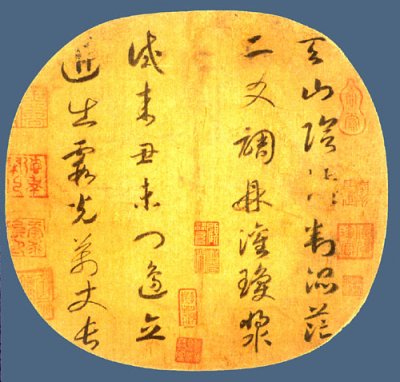Tang Dynasty Poetry
 The Tang Dynasty was marked by cultural prosperity of cosmopolitan style and it is regarded as the golden age of Chinese art and literature. Characterized by stability, progress, and harmony, Tang China became one of the greatest empires in the medieval era.
The Tang Dynasty was marked by cultural prosperity of cosmopolitan style and it is regarded as the golden age of Chinese art and literature. Characterized by stability, progress, and harmony, Tang China became one of the greatest empires in the medieval era.
Importance of Poetry
To this day, Tang Dynasty poetry played a key part in the daily life of the Chinese society and it is considered to be the absolute culmination in Chinese poetry. In order to pass civil service examinations, scholars were required to master skill in the composition of poetry.
According to the pre-eminent collection of Tang poetry entitled Complete Tang Poems( Quan Tangshi in Chinese), there were around 49,000 surviving poems divided into 900 volumes and written by a total of 2,200 authors.
Characteristics of Tang Poetry
Tang poetry was strongly connected to religion and had a major impact on the Song Dynasty poetry and even on world literature. The most popular Tang poetry styles included ”jintishi,” used by poets such as Cui Hao and Wang Wei and ”gushi,” used by Li Bai.
The former poetical style is characterized by seven Chinese characters per line, an antithesis between the second and the third couplets, and eight-line stanzas. Poetry contests were very popular and Tang poems were often recited in Classical Chinese, which was spoken during that era.
Famous Tang Poets
Both poets belong to the High Tang period, also known as Golden Tang and their poems mirror the extravagant lives of the imperial court as well as contradictory feelings prompted by the Tang military campaigns.
Li Bai authored around 1,000 extant poems and 34 of them are included in the popular anthology 300 Tang Poemscompiled by the Chinese scholar Sun Zhu. The most famous poems written by Li Bai include Quiet Night Thought, which features in school texts in present day China as well as Waking From Drunkenness on a Spring Day”, a poem which celebrates the pleasure of drinking wine.
His friend, Du Fu, often referred to as the Poet-Sage, wrote nearly 1,500 poems with themes such as history, military tactics, painting and morality and written in various registers such as colloquial, allusive, and literary. Around two-thirds of his poems are written under the stylized poetic form known as ”lushi,” which was rich in parallelisms.
